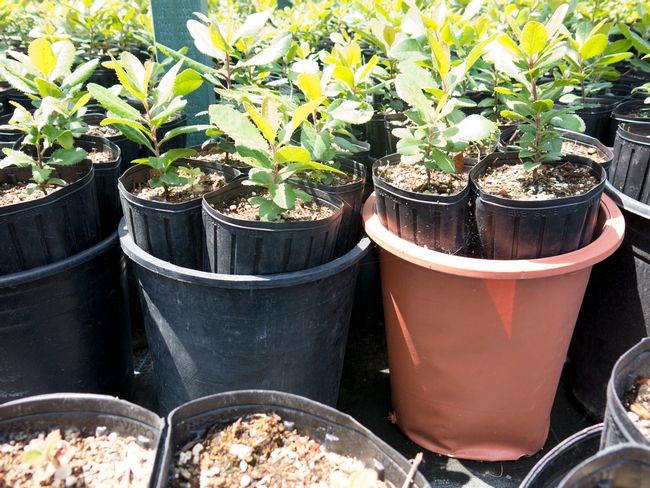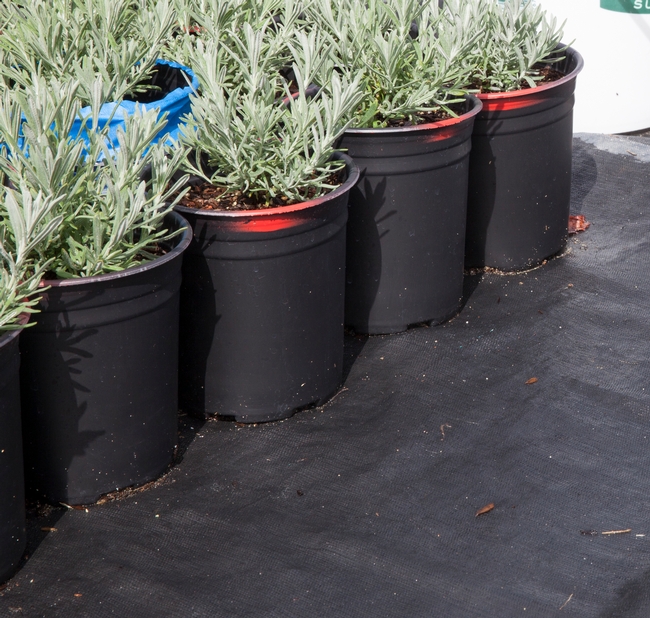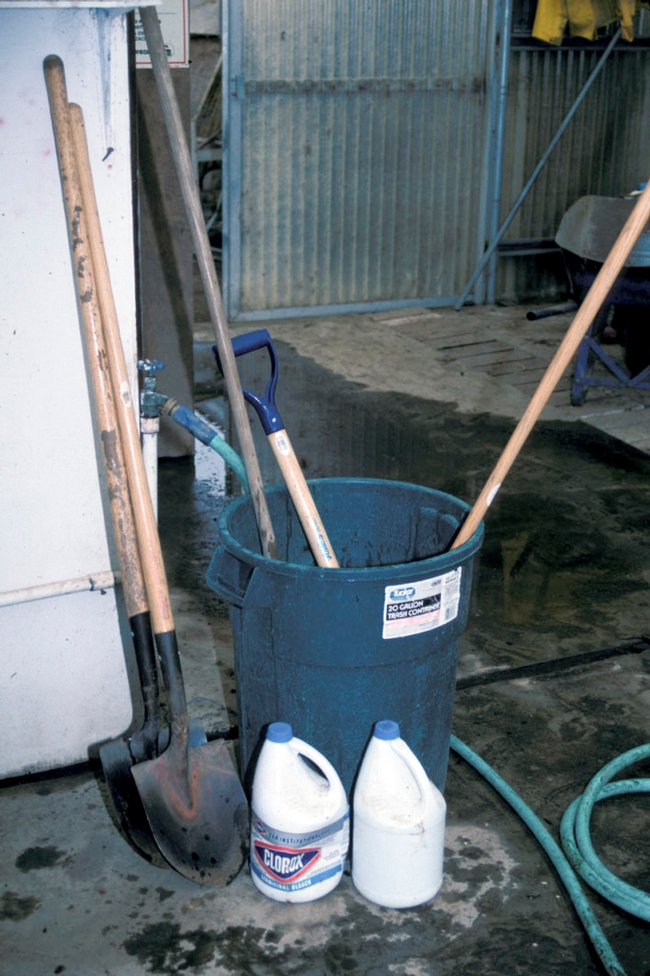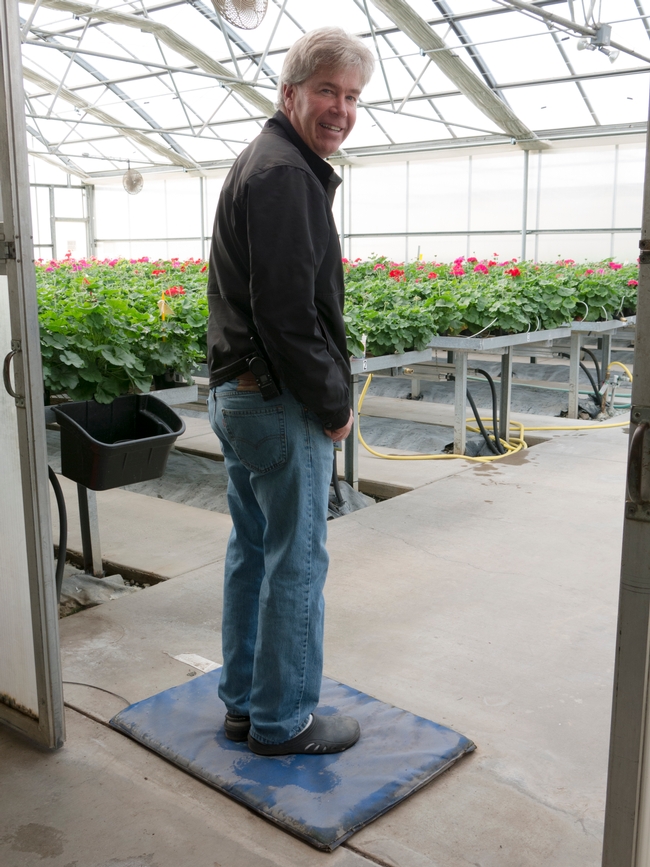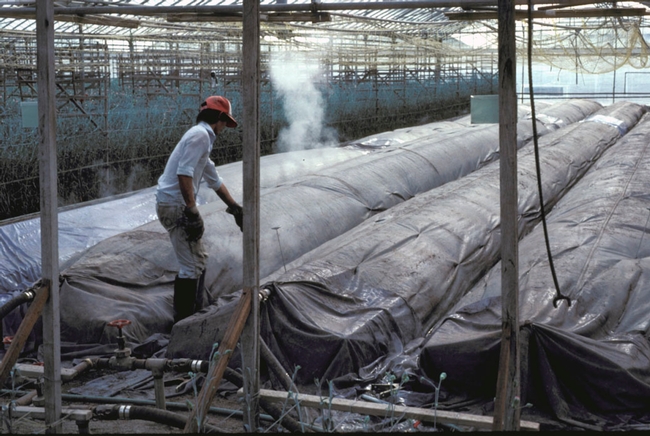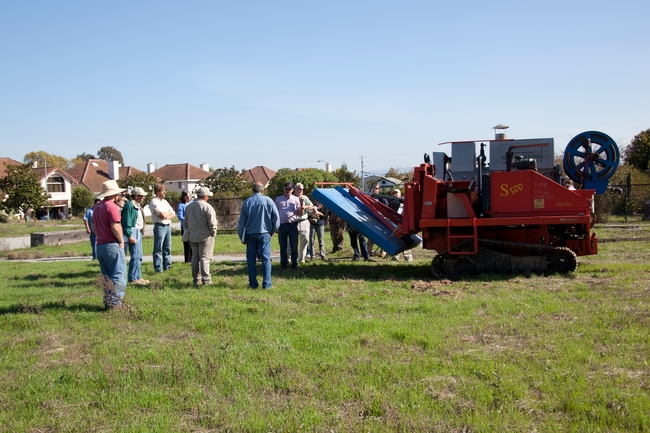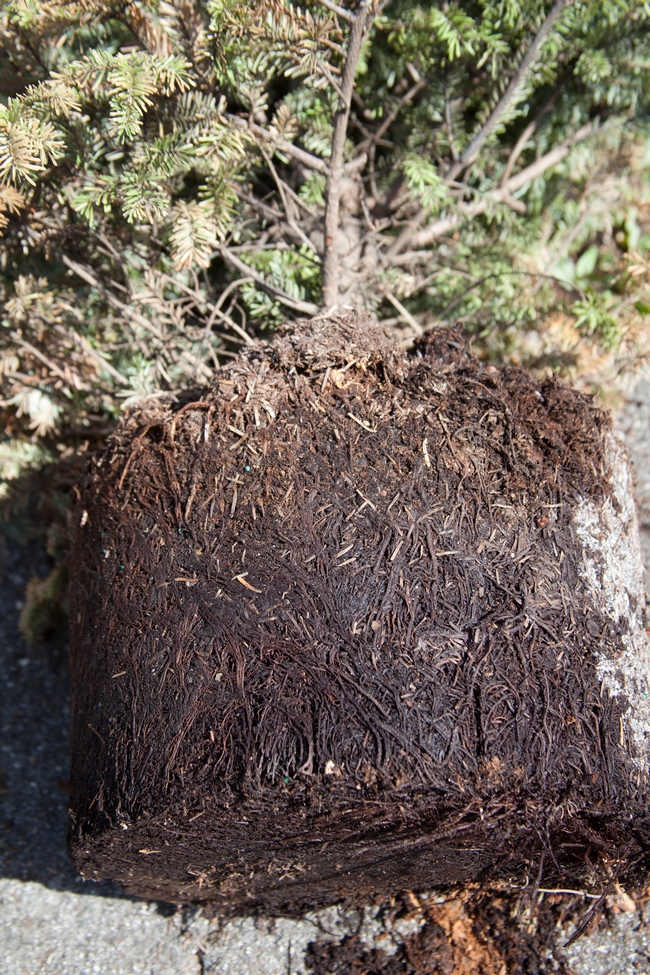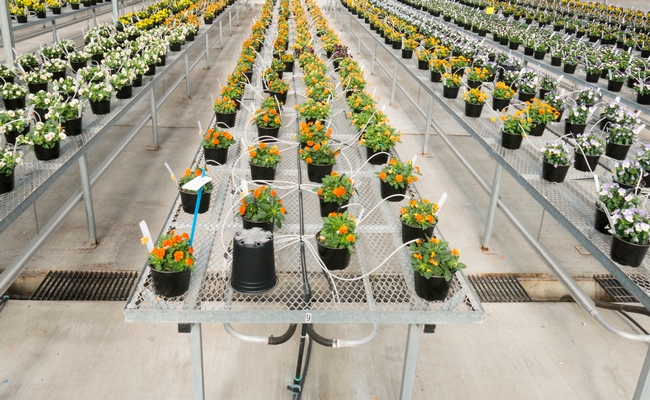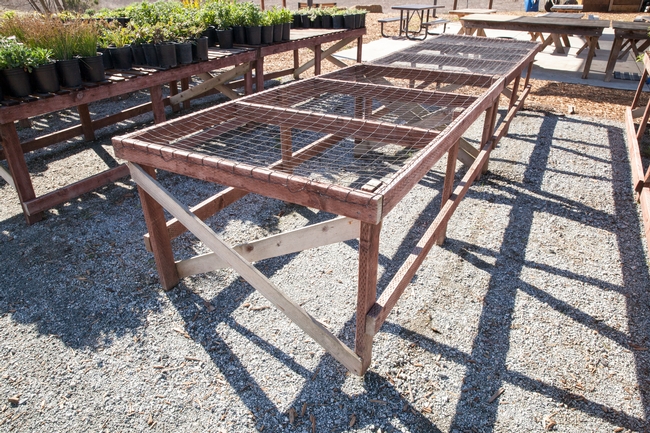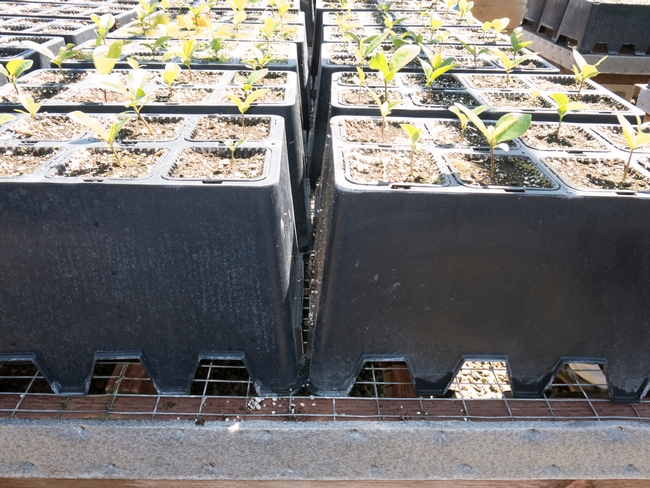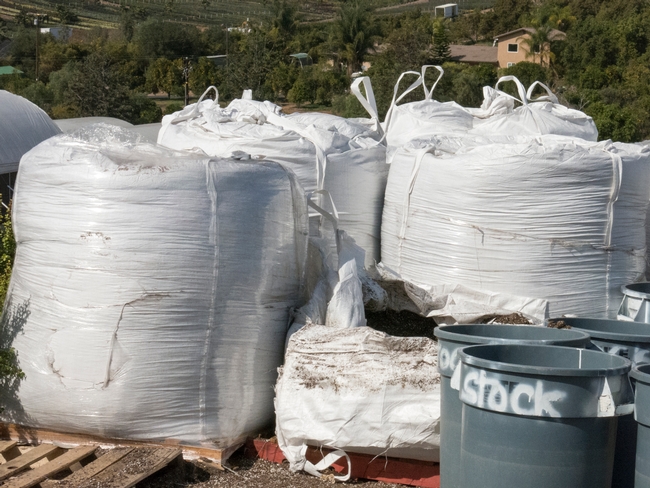The previous post described the importance of inspecting incoming plants and keeping a clean nursery to avoid pest introductions. Many important root pathogens and other pathogens, weeds, and insects can be introduced in contaminated soil and growing media, and so the focus of this post will be on ways to prevent introductions from these potential sources.
Soil- inhabiting plant pathogens can be found in growing media and associated root and crop debris. Anything that has contacted the ground, such as equipment, tools, irrigation hoses, and workers' hands and shoes could be contaminated. Pots should not sit directly on the ground. Phytophthora infecting the roots of just one potted plant can produce thousands of propagules that can move in water draining from the pot and infect roots of nearby plants.
Likewise, during a vigorous rain storm, these propagules can be splashed from the contaminated pot or ground onto nearby plants. Benches or similar structures that support plants above the ground can eliminate or minimize this. In greenhouse structures, concrete floors or other impervious surfaces are ideal for walkways between benches. Floor surfaces should be kept clean of plant debris, soil, or growing media. After a crop cycle, benches should be cleaned of plant debris, washed and dried. Drying can kill sensitive plant pathogens.
Ideal bench and floor sanitation consisting of metal and concrete flooring, which are easily cleaned and disinfected.
Benches can be sprayed with diluted chlorine bleach (0.5 % sodium hypochlorite solution) or other suitable disinfectant. Potting media and plant debris will inhibit the activity of most disinfectants.
Benches containing wood can be disinfected with copper-containing paints to disinfect the wood and also extend the life of the wood.
Proprietary container supports elevate pots above the ground to prevent contaminated water runoff from infecting roots. Here the containers are placed on benches.
There are many clever ways to raise pots and containers off the ground.
Tree pots can be cleverly placed inside larger pots to support their bottoms off the ground.
Weed cloth over gravel is a cost-effective way of reducing pot contact with the ground and water runoff
Tools must be free of clinging soil and debris before they are disinfected with chlorine bleach.
The bottom of shoes can be sanitized if they are free of soil.
The bottom of clean shoes can be sanitized with disinfectants such as quaternary ammonium compounds .
Steaming raised beds with the boiler used for heating the greenhouse.
Portable steam generator for field or large area use.
Store and handle growing media so it does not come in contact with the ground or water runoff. Cover the media when not in use.
